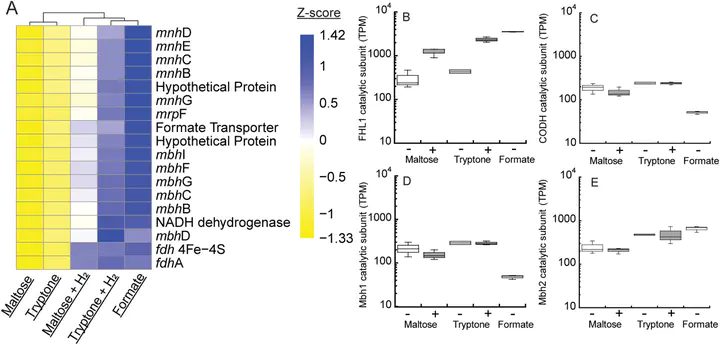Formate hydrogenlyase and formate secretion ameliorate H2 inhibition in the hyperthermophilic archaeon Thermococcus paralvinellae
 Image credit: [Holden Lab]
Image credit: [Holden Lab]Abstract
Some hyperthermophilic heterotrophs in the genus Thermococcus produce H2 in the absence of S° and have up to seven hydrogenases, but their combined physiological roles are unclear. Here, we show which hydrogenases in Thermococcus paralvinellae are affected by added H2 during growth without S°. Growth rates and steady-state cell concentrations decreased while formate production rates increased when T. paralvinallae was grown in a chemostat with 65 µM of added H2(aq). Differential gene expression analysis using RNA-Seq showed consistent expression of six hydrogenase operons with and without added H2. In contrast, expression of the formate hydrogenlyase 1 (fhl1) operon increased with added H2. Flux balance analysis showed H2 oxidation and formate production using FHL became an alternate route for electron disposal during H2 inhibition with a concomitant increase in growth rate relative to cells without FHL. T. paralvinellae also grew on formate with an increase in H2 production rate relative to growth on maltose or tryptone. Growth on formate increased fhl1 expression but decreased expression of all other hydrogenases. Therefore, Thermococcus that possess fhl1 have a competitive advantage over other Thermococcus species in hot subsurface environments where organic substrates are present, S° is absent and slow H2 efflux causes growth inhibition.
Supplementary notes can be added here, including code and math.